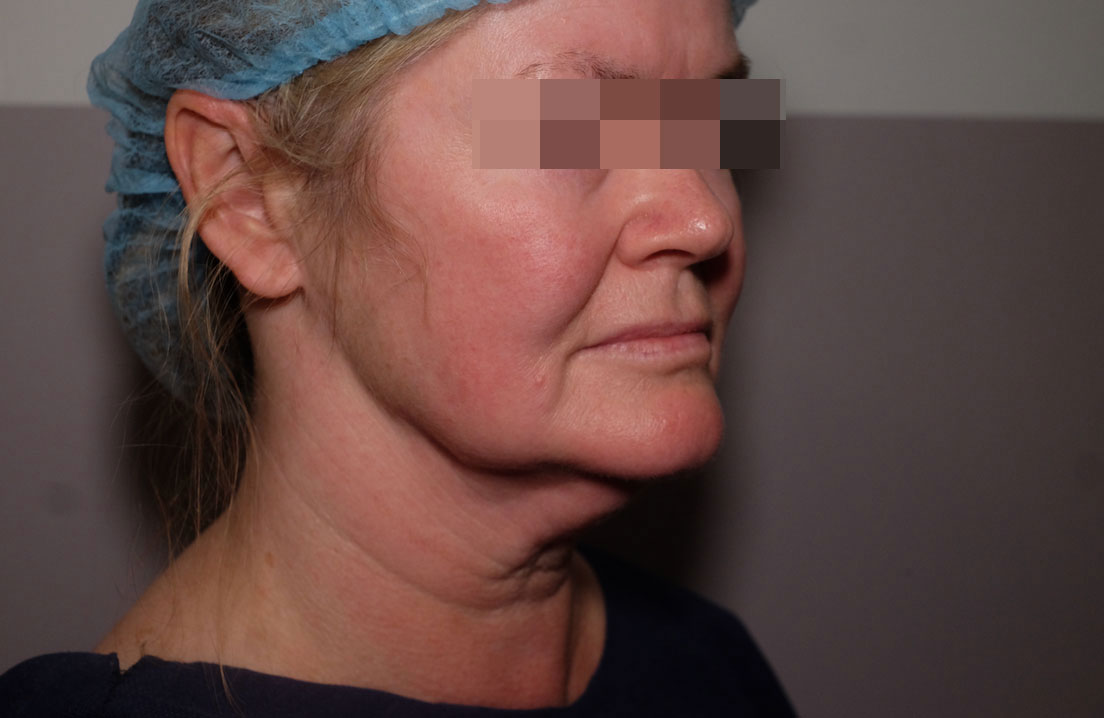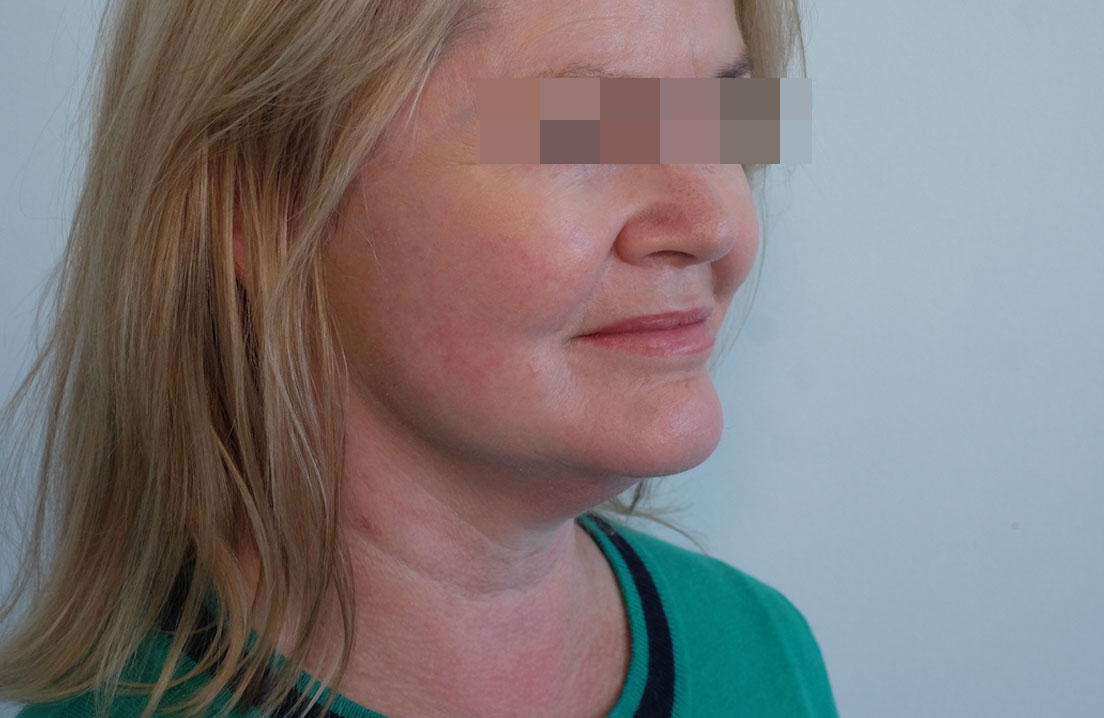About Face & Neck Lift
Face and neck lifting encompasses a range of surgical procedures, all of which target sagging tissues of the lower two-thirds of the face (from the cheekbone down) and also the neck.
The soft tissues of the face comprise five layers – from superficial to deep: skin – fat – SMAS membrane – sub-SMAS space, and periosteum (the fibrous covering of the facial bones).
Of these layers, the middle or SMAS layer must be addressed in order for any face lift procedure to be effective, with long lasting results. This is because the SMAS layer is fibrous and relatively low in elasticity, meaning that when it is lifted, it does not quickly stretch out again. It is also important to leave attached to the SMAS as much of the more superficial layers as possible, so that they are lifted with the SMAS.
Lifting of the SMAS layer during a face lift can be achieved in two different ways: a deep-plane approach, or a mid-plane approach. The difference between these two techniques is that the deep plane procedure involves division of the SMAS and surgical invasion of the fourth or sub-SMAS space, with the aim of further mobilising the SMAS layer itself. This is a very effective procedure, but due to its complexity, it more than doubles the amount of time required, which greatly increases the cost of the surgery.


A further risk of the deep-plane procedure is that surgical entry into the fourth (sub-SMAS) space adds an extra risk of damage, to important anatomical structures such as motor nerves, major blood vessels, and salivary glands and ducts.
For the above reasons, I prefer the mid-plane face lift (sometime referred to as the “MACS Lift”), which exposes the SMAS but does not cut through it to gain access to the space underneath. The SMAS layer can be very effectively lifted by use of slow-dissolving “purse string” sutures woven through the SMAS, lifting and anchoring it to the cheekbone. It is important to clarify that this type of open surgery is fundamentally different from “thread lifts”, which are performed “blind” (i.e. without surgical exposure of the facial tissue layers) and cannot directly lift the SMAS itself.
While no surgical procedure can ever be labelled as “safe” – there are risks with all types of surgery – I believe that the mid-plane face lift is inherently safer than the deep-plane approach.
Other procedures which can be added to the basic mid-plane face lift to enhance its results include platysmaplasty (or central neck tuck), which tightens that part of the SMAS layer behind the chin to reduce central neck sagging or “turkey-gobbler”; fat transfer to the mid face, which is very useful for patients who have lost soft tissue volume in this area; and brow lift.
As always, the journey begins with a thorough consultation between the patient and Dr Prochazka, during which careful examination and assessment is made, and different surgical techniques are discussed, with a focus on achieving the patient’s desired result. The patient’s motivations for the procedure are explored in detail, in order to ensure that an appropriate decision has been made. Dr Prochazka will also outline in detail the possible complications of the surgery. This “informed consent” process is essential for a good outcome.
A second consultation will generally also be required – this may in some cases be conducted remotely. However, at least one face-to-face consultation is mandatory in order that an accurate and realistic assessment can be made of the patient’s facial soft tissues, leading to an individually optimised recommendation for treatment.
Surgery is performed under general anaesthesia in a licensed hospital. During the surgery, incisions are made in front of the ears, extending slightly behind the earlobe, and dissection is carried forward to expose enough of the SMAS layer to allow effective placement of lifting sutures. The skin is redraped, trimmed and sutured closed, leaving a relatively small scar hidden in the contours of the ear.
Central neck tuck is a slightly different procedure in which a short incision is made through the skin directly underneath the chin, the neck SMAS is exposed, trimmed and tightened centrally with slow-dissolving sutures, and the skin closed again. This procedure is sometimes combined with careful and judicious neck liposculpture. Excess skin can also be removed.
Down time following a face lift procedure can be as little as two weeks, with relatively little swelling or bruising. The incision scars generally heal very well, although there can be some change in the shape of the earlobes. Mid plane face lift is equally suitable for men and women, and can produce very pleasing results even in relatively elderly patients.

